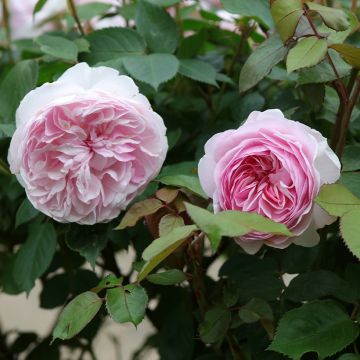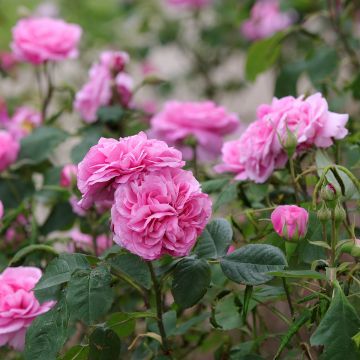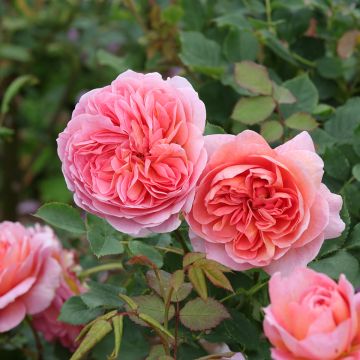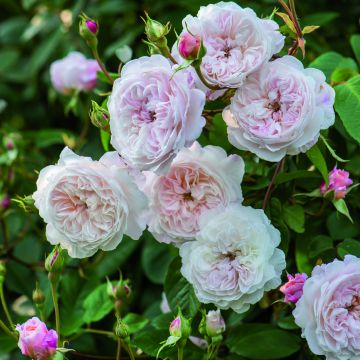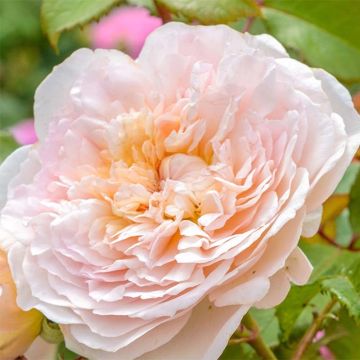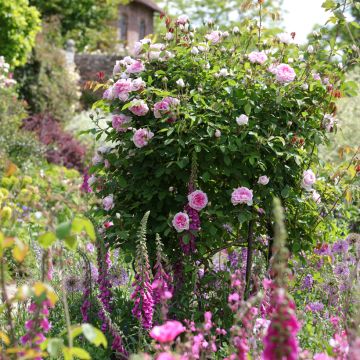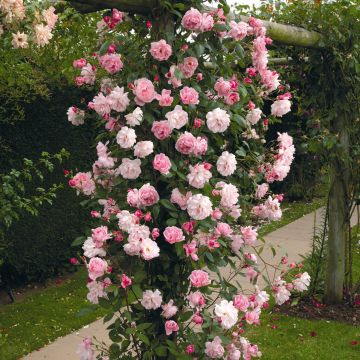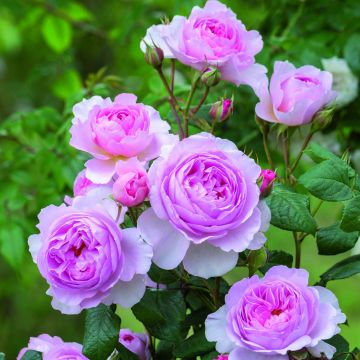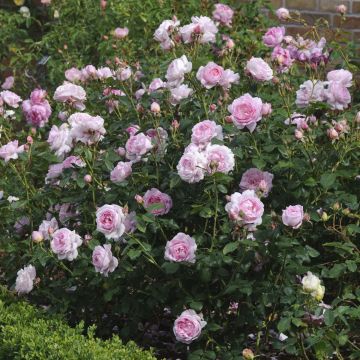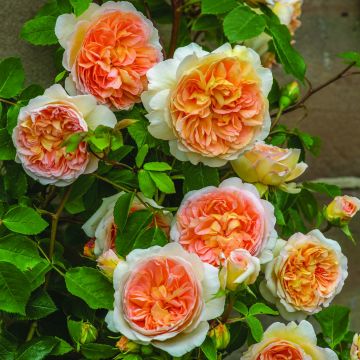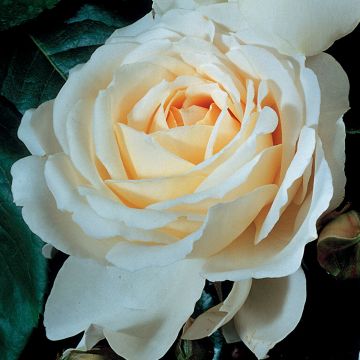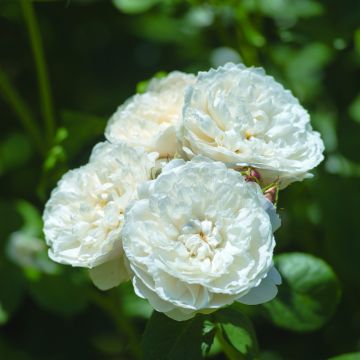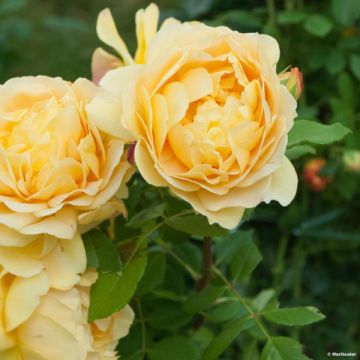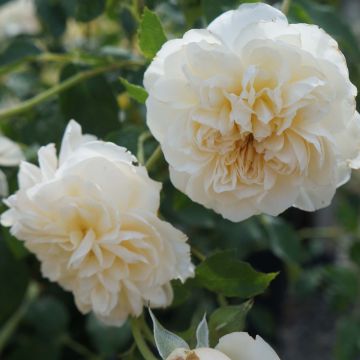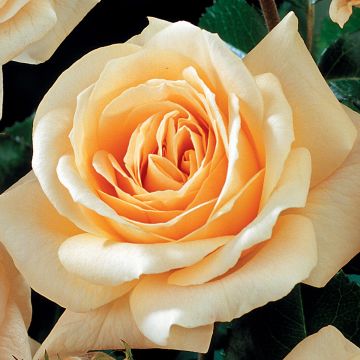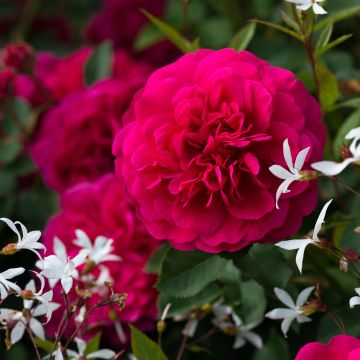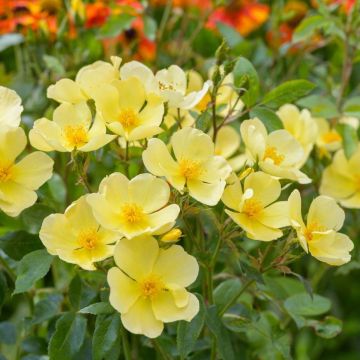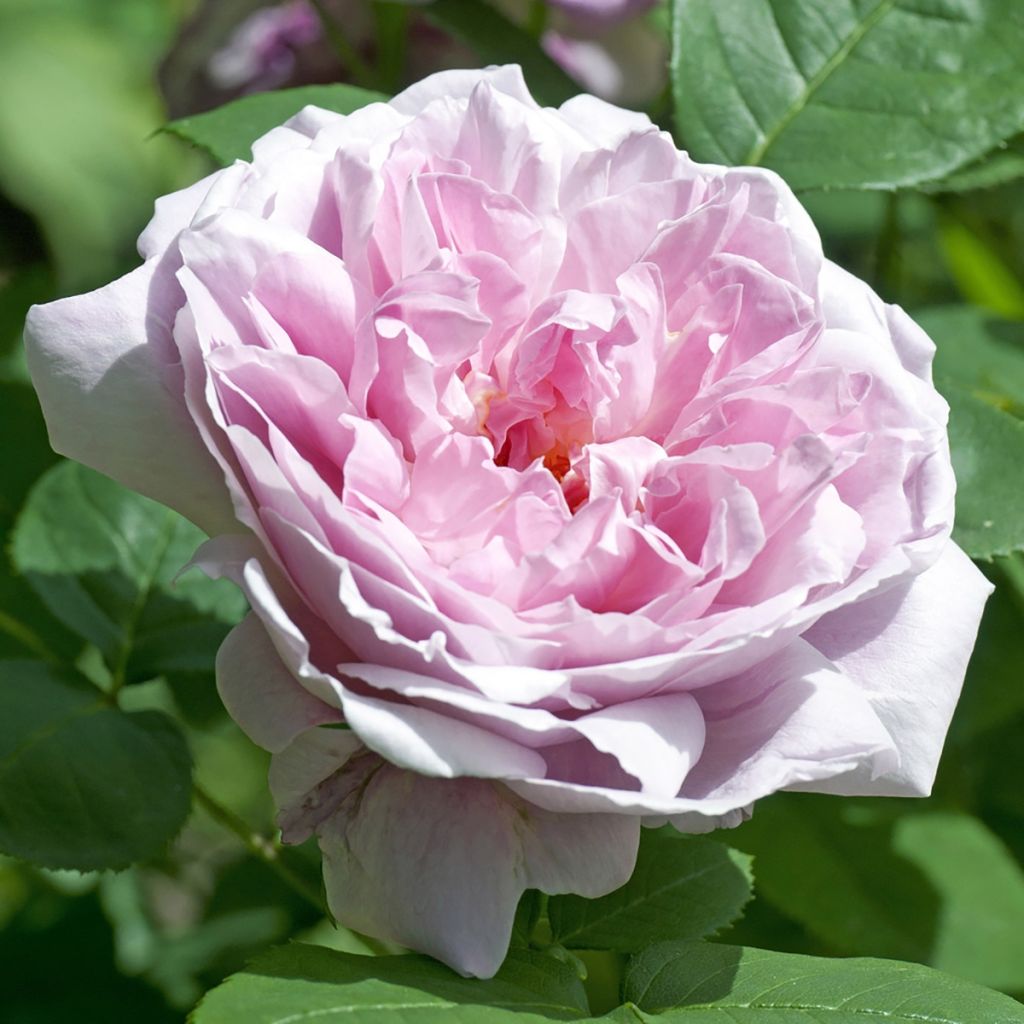

Rosa Mary Rose - English Shrub Rose
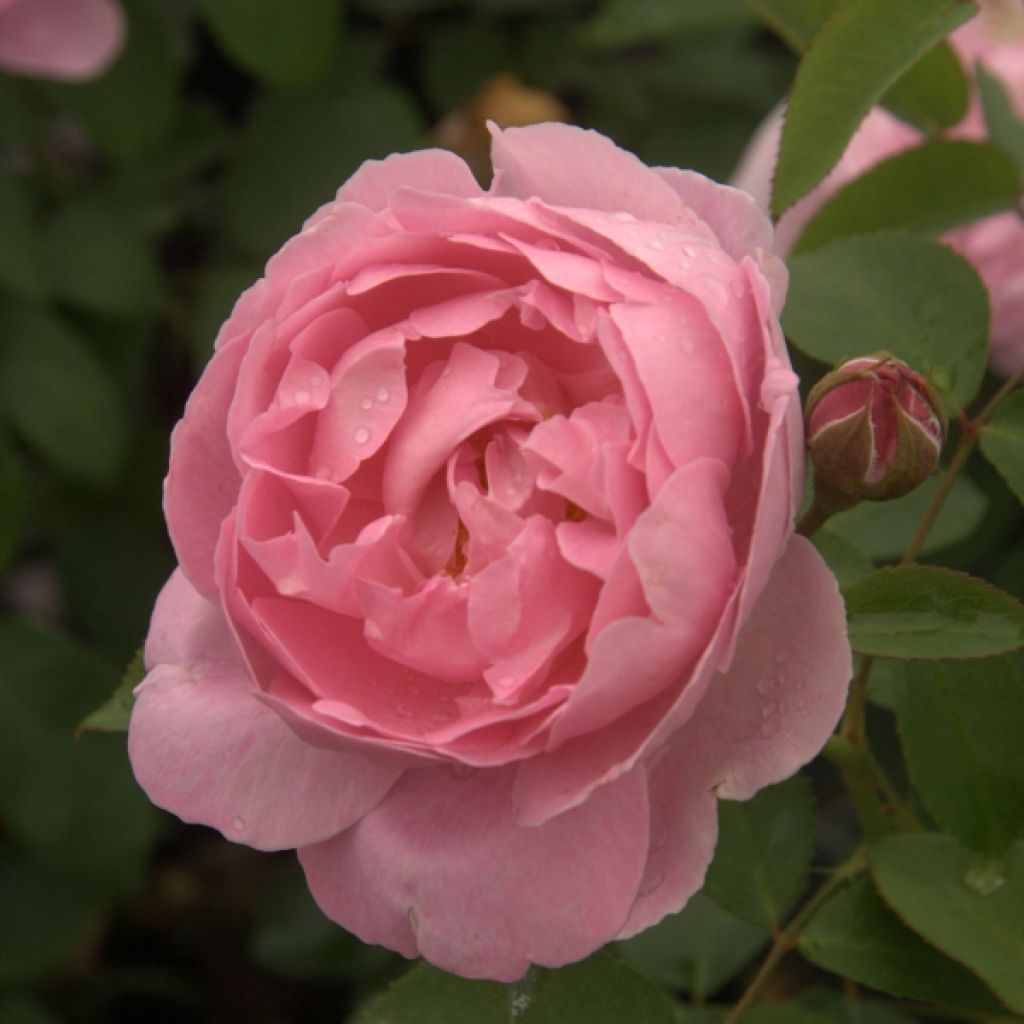

Rosa Mary Rose - English Shrub Rose
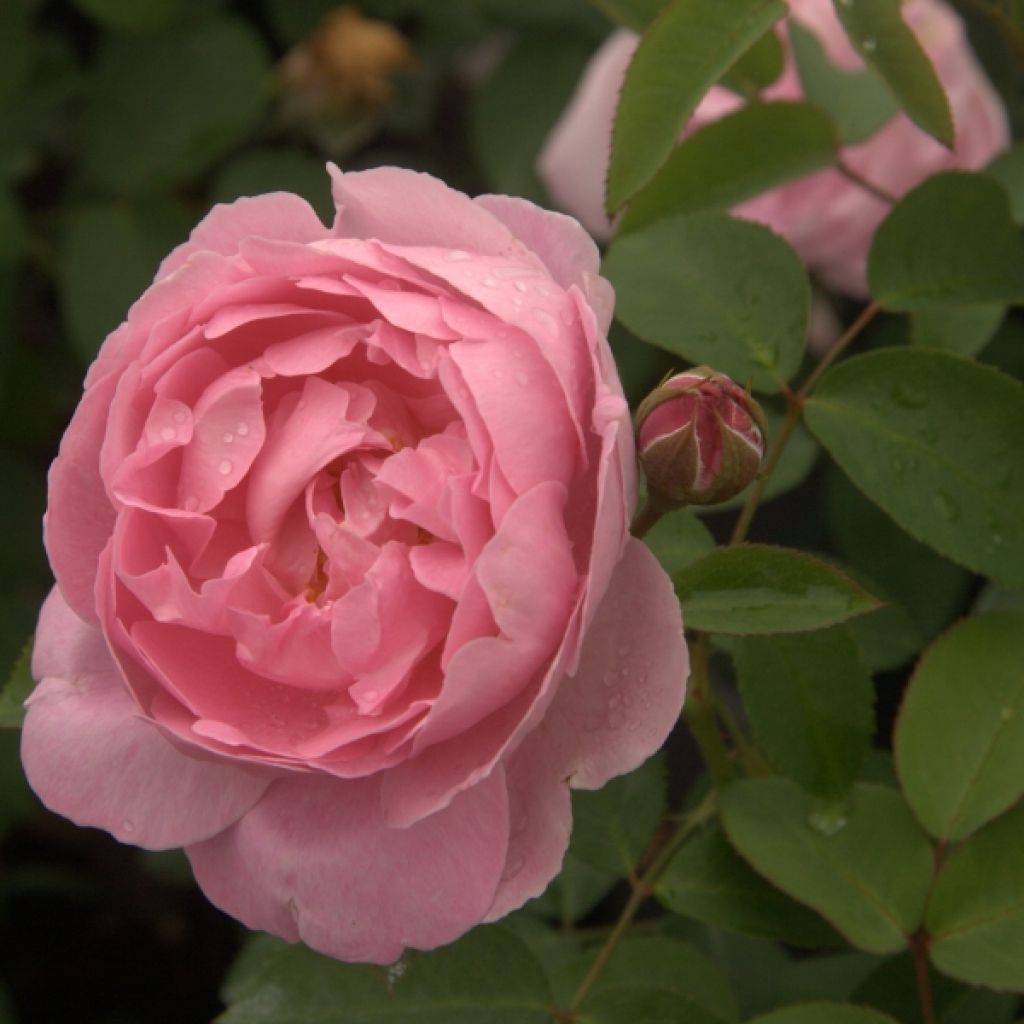

Rosa Mary Rose - English Shrub Rose
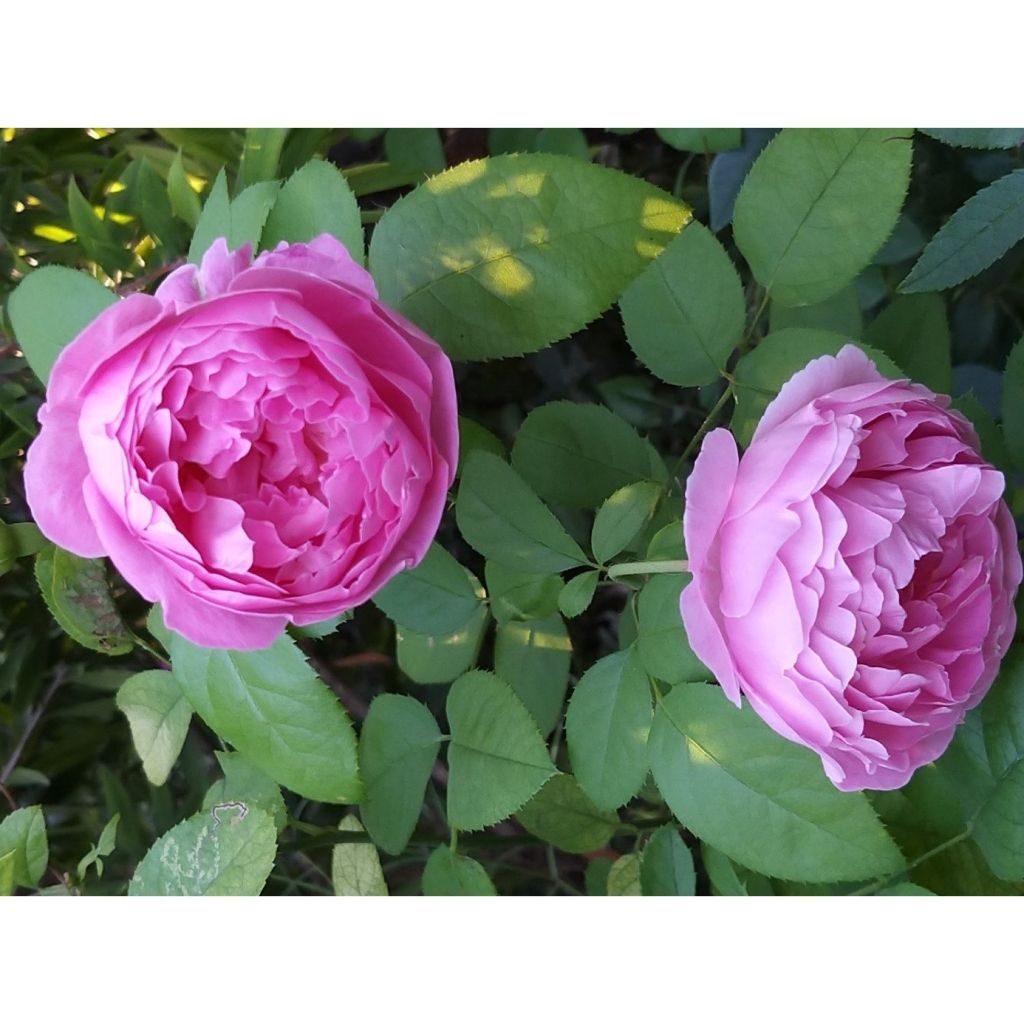

Rosa Mary Rose - English Shrub Rose
Rosa Mary Rose - English Shrub Rose
Rosa Mary Rose 'Ausmary'
Very healthy rose that even bloomed in December. It smells really good, like a fragrance or luxury beauty products. Revised translation: "A very healthy rose that even bloomed in December. It smells really good, like a fragrance or luxury beauty products.
Noisy-le-Grand, 04/12/2022
Why not try an alternative variety in stock?
View all →This plant carries a 24 months recovery warranty
More information
We guarantee the quality of our plants for a full growing cycle, and will replace at our expense any plant that fails to recover under normal climatic and planting conditions.
From €5.90 for pickup delivery and €6.90 for home delivery
Express home delivery from €8.90.
From €5.90 for pickup delivery and €6.90 for home delivery
Express home delivery from €8.90.
Delivery to Corse prohibited: UE law prohibits the import of this plant from mainland France to Corse as part of the fight against Xylella fastidiosa. Please accept our sincere apologies.
More information
Does this plant fit my garden?
Set up your Plantfit profile →
Description
The rose Mary Rose is one of David Austin's finest creations. It is remarkable for its early, regular, and particularly long flowering period, which rarely leaves this beautiful bush devoid of flowers between May-June and October-November. Its double flowers, in large, slightly loose cups, evolve from deep pink when they open to pale pink when fully bloomed, creating a charming range of pink shades on the plant. Their fragrance is that of old roses, with a hint of honey and almond. It is a variety that will not disappoint lovers of old roses or impatient gardeners, as it grows quickly and has good disease resistance.
The rose Mary Rose was introduced in 1983. It belongs to the family of English Roses, a term coined by David Austin himself. These roses are obtained by crossing an old rose (gallica, bourbon, etc.) with a Hybrid Tea or a Floribunda. They are well-known for being highly repeat-flowering, and their flowers are renowned for their beautiful, regular rosettes and strong fragrance. 'Mary Rose', particularly reliable and healthy, has been the parent of many beautiful creations by the famous British breeder (13 to date) such as Winchester Cathedral, Eglantyne, or more recently Glamis Castle. It is a cross between the roses 'Wife of Bath' and 'The Miller'.
It is a lush, well-branched shrub rose, with a naturally bushy habit slightly taller than wide. At maturity, it will reach about 1.20m (4ft) in height and 90cm (35in) in width. The plant constantly produces new shoots of a pinkish colour, from the bottom to the top of the bush. In this early variety, flowering occurs as early as spring and continues regularly throughout the summer. The flowers, grouped in small clusters of 4 or 5, measure about 8cm (3in) wide and resemble the flowers of old Damask roses. These double flowers stand upright on firm stems. Each flower is composed of more than 40 undulate petals arranged informally in a slightly loose cup. They start off fairly deep pink when they bloom and then fade to a tender and fresh pink, with the centre of the flower remaining darker than the periphery. Mary Rose's foliage, with its wide leaflets, is a medium green and slightly shiny. Its disease resistance is rather good, depending on the climate and growing conditions. Note that this rose tolerates heat and partial shade, and even shade in hot climates.
This English rose, Mary Rose, remains fairly compact, bushy at will, has excellent staying power, and flowers for 6 months. It is therefore perfect for layering in a rose bed alongside taller varieties and groundcover roses. It could be paired with roses such as 'Astronomia', 'The Fairy', or 'Gloire des Polyanthas'. To add a contrast to this predominantly pink bed, plant white double roses like Winchester Cathedral, blue campanulas, the perennial geranium Blue Cloud, or the small herbaceous clematis with blue bells, Clematis heracleifolia that loves to weave through the roses.
Created by David Austin in 1983.
Report an error about the product description
Plant habit
Flowering
Foliage
Botanical data
Rosa
Mary Rose 'Ausmary'
Rosaceae
Cultivar or hybrid
Rosa canina Laxa (Wrapped bare root)
Other David Austin Roses
Planting and care
Plant your English Rose Mary Rose in a sunny location, although it tolerates partial shade, especially in hot climates. English roses are tolerant but they do not like excessive limestone. They will adapt to any garden as long as the soil is well-worked and sufficiently rich. To plant your rose, prepare the soil by crumbling it and adding an amendment, such as bonemeal, at the bottom of the planting hole. Water abundantly after planting to remove air pockets. Water regularly for a few weeks to encourage root growth. Pruning English roses is essential for flowering. At the end of winter, shorten the branches to 3-5 buds above the ground (at the lowest level), choosing an outward-facing bud for a more elegant habit. Take advantage of this pruning to remove dead wood and unsightly branches. Pruning is done at an angle above a bud. As the flowers bloom, remove faded flowers to stimulate the development of other buds.
Roses are often spotted or unsightly in late summer, but it is not a problem for their development. These spots are not harmful to the rose; it is a natural phenomenon.
Planting period
Intended location
Care
-
, onOrder confirmed
Reply from on Promesse de fleurs
Haven't found what you were looking for?
Hardiness is the lowest winter temperature a plant can endure without suffering serious damage or even dying. However, hardiness is affected by location (a sheltered area, such as a patio), protection (winter cover) and soil type (hardiness is improved by well-drained soil).

Photo Sharing Terms & Conditions
In order to encourage gardeners to interact and share their experiences, Promesse de fleurs offers various media enabling content to be uploaded onto its Site - in particular via the ‘Photo sharing’ module.
The User agrees to refrain from:
- Posting any content that is illegal, prejudicial, insulting, racist, inciteful to hatred, revisionist, contrary to public decency, that infringes on privacy or on the privacy rights of third parties, in particular the publicity rights of persons and goods, intellectual property rights, or the right to privacy.
- Submitting content on behalf of a third party;
- Impersonate the identity of a third party and/or publish any personal information about a third party;
In general, the User undertakes to refrain from any unethical behaviour.
All Content (in particular text, comments, files, images, photos, videos, creative works, etc.), which may be subject to property or intellectual property rights, image or other private rights, shall remain the property of the User, subject to the limited rights granted by the terms of the licence granted by Promesse de fleurs as stated below. Users are at liberty to publish or not to publish such Content on the Site, notably via the ‘Photo Sharing’ facility, and accept that this Content shall be made public and freely accessible, notably on the Internet.
Users further acknowledge, undertake to have ,and guarantee that they hold all necessary rights and permissions to publish such material on the Site, in particular with regard to the legislation in force pertaining to any privacy, property, intellectual property, image, or contractual rights, or rights of any other nature. By publishing such Content on the Site, Users acknowledge accepting full liability as publishers of the Content within the meaning of the law, and grant Promesse de fleurs, free of charge, an inclusive, worldwide licence for the said Content for the entire duration of its publication, including all reproduction, representation, up/downloading, displaying, performing, transmission, and storage rights.
Users also grant permission for their name to be linked to the Content and accept that this link may not always be made available.
By engaging in posting material, Users consent to their Content becoming automatically accessible on the Internet, in particular on other sites and/or blogs and/or web pages of the Promesse de fleurs site, including in particular social pages and the Promesse de fleurs catalogue.
Users may secure the removal of entrusted content free of charge by issuing a simple request via our contact form.
The flowering period indicated on our website applies to countries and regions located in USDA zone 8 (France, the United Kingdom, Ireland, the Netherlands, etc.)
It will vary according to where you live:
- In zones 9 to 10 (Italy, Spain, Greece, etc.), flowering will occur about 2 to 4 weeks earlier.
- In zones 6 to 7 (Germany, Poland, Slovenia, and lower mountainous regions), flowering will be delayed by 2 to 3 weeks.
- In zone 5 (Central Europe, Scandinavia), blooming will be delayed by 3 to 5 weeks.
In temperate climates, pruning of spring-flowering shrubs (forsythia, spireas, etc.) should be done just after flowering.
Pruning of summer-flowering shrubs (Indian Lilac, Perovskia, etc.) can be done in winter or spring.
In cold regions as well as with frost-sensitive plants, avoid pruning too early when severe frosts may still occur.
The planting period indicated on our website applies to countries and regions located in USDA zone 8 (France, United Kingdom, Ireland, Netherlands).
It will vary according to where you live:
- In Mediterranean zones (Marseille, Madrid, Milan, etc.), autumn and winter are the best planting periods.
- In continental zones (Strasbourg, Munich, Vienna, etc.), delay planting by 2 to 3 weeks in spring and bring it forward by 2 to 4 weeks in autumn.
- In mountainous regions (the Alps, Pyrenees, Carpathians, etc.), it is best to plant in late spring (May-June) or late summer (August-September).
The harvesting period indicated on our website applies to countries and regions in USDA zone 8 (France, England, Ireland, the Netherlands).
In colder areas (Scandinavia, Poland, Austria...) fruit and vegetable harvests are likely to be delayed by 3-4 weeks.
In warmer areas (Italy, Spain, Greece, etc.), harvesting will probably take place earlier, depending on weather conditions.
The sowing periods indicated on our website apply to countries and regions within USDA Zone 8 (France, UK, Ireland, Netherlands).
In colder areas (Scandinavia, Poland, Austria...), delay any outdoor sowing by 3-4 weeks, or sow under glass.
In warmer climes (Italy, Spain, Greece, etc.), bring outdoor sowing forward by a few weeks.

































